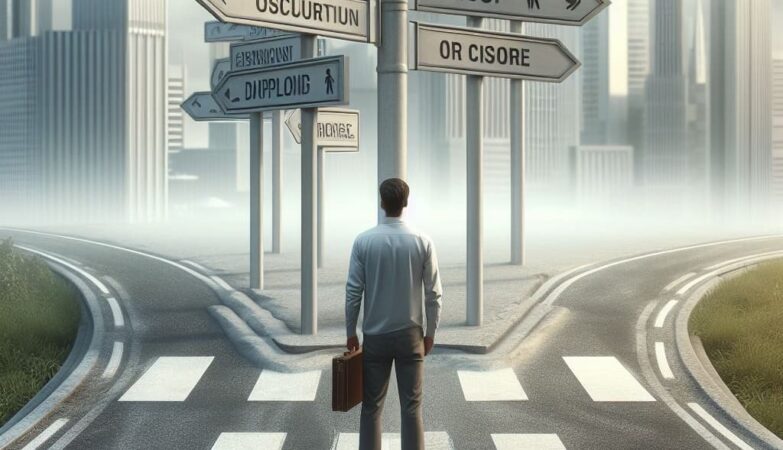Every business that operates in the online world nowadays requires a website. It’s as if you don’t exist without one. Furthermore, as the final point of sale, every company requires a website. Digital marketing is constantly evolving and it’s goal is to get people to visit your website and take the desired action, such as subscribe, buy something, or download something.
Aside from that, consumers nowadays often browse websites before deciding to buy something or subscribe to a service. They want to learn as much as they can, compare prices, and, most importantly, assess the overall experience. This is where web design comes into play.
Customer experience is greatly influenced by the design of your website. It decides whether or not visitors can stay on your website or leave. Consumers, on the other hand, have unique expectations, needs, and demands when it comes to their online experience, and yours must be able to satisfy them. So, here are a few reasons why a good website design is critical for your company.
Table of Contents
Why Page Speed Matters
When it comes to website design, one of the most important requirements that customers have is speed. Your website visitors will simply leave and, in many cases, never return if your website isn’t fast enough and your pages take too long to load. In fact, even a single second delay in page load time can lead to a 16 percent drop in user satisfaction, an 11 percent drop in page views, and a 7% drop in conversion rates.
For a website that earns $100,000 per day, for example, a one-day delay will cost $2.5 million in revenue annually. That is why it is critical to ensure that your website is quick, particularly since website design encompasses not only visual representation but also functionality.
Furthermore, 47% of consumers expect a page to load in 2 seconds or less, with 64% of mobile users leaving a site that takes longer than 3 seconds to load. As a result, if you want to avoid high bounce rates and dissatisfied customers, you must ensure that your website is fast enough.
Importance of Having a Mobile-Friendly Website
Mobile friendliness is another important design factor for your website. Mobile traffic has now surpassed desktop traffic, and the number of mobile users continues to rise every day. Furthermore, mobile users expect the same level of experience and convenience from websites as they do from desktop computers.
Fortunately, webmasters no longer have to maintain two versions of the same website, one for desktop users and the other for mobile users.
In fact, the responsive design of your website would ensure that all users have the same experience regardless of the device or screen size they’re using to access it. A responsive design is not only less expensive, but also less difficult to maintain. It must, however, be incorporated into the web design.
Importance of Cyber Security
In fact, the responsive design of your website would ensure that all users have the same experience regardless of the device or screen size they’re using to access it. A responsive design is not only less expensive, but also less difficult to maintain. It must, however, be incorporated into the web design.
They just want to know that their sensitive information, such as credit card numbers, names, addresses, and log-in credentials, is properly protected. Consumers will not bother with whatever you have to offer if your website lacks proper cyber security.
Some of the world’s best online casinos, for example, take cyber security very seriously. They’ve gone so far as to include biometric scans for authentication to put their clients’ minds at ease when it comes to their earnings and sensitive information they’ve supplied. Ecommerce websites, for example, handle a large number of transactions each day. They at the very least use an SSL certificate on their pages to ensure that the check-out process is properly secured.
The Importance of Visual Appeal in Web Design
The importance of visual content and website graphics in overall design for user satisfaction and experience cannot be overstated. After all, websites are created for consumers, and when creating a website, you must keep your customers’ best interests in mind. When it comes to graphics, everything matters, from the colors you choose to the overall layout of the website.
Furthermore, visual content, such as photographs or videos, is critical. The primary reason for the importance of visual hierarchy in website design is that it aids in the formation of strong first impressions. In fact, users form their first impression of your website in 50 milliseconds, and 94 percent of those impressions are based on the visual design.
Furthermore, consumers decide whether your website is good or bad in 2.6 seconds on average, and their decision is largely influenced by visual elements. Furthermore, because the human brain processes visual information 60,000 times faster than textual information, the visual hierarchy of your website will largely determine whether your guests stay to explore it further or leave and never return.
Website Navigation
When it comes to browsing a website, navigation is extremely important to the customer experience. Consumers want to be able to browse without being hampered or delayed. To put it another way, they desire a seamless experience. As a result, it’s critical that you pay attention to navigation and accessibility when designing your website.
The goal of navigation should be to make it as easy as possible for customers to find what they’re looking for. A search bar on your website, for example, is a must, and it must be correctly optimized so that your customers do not end up on broken or missing pages.
Additionally, ensure that your customers can easily access customer service and support features, as well as a FAQ (Frequently Asked Questions) page, from any page on your website. Another important factor to consider is whether or not you should allow customers to receive seamless offers as they navigate your website. This includes including well-designed CTA (Call-To-Action) buttons alongside convincing offers on relevant pages.
The design of your website decides whether or not your visitors will stay on it and eventually convert, or if they will leave it unsatisfied. It’s critical to understand your customers’ needs and aspirations when designing a website so that you can create one that meets, if not exceeds, those expectations.








